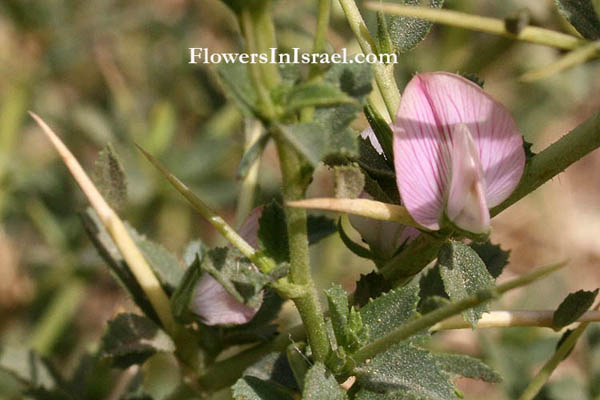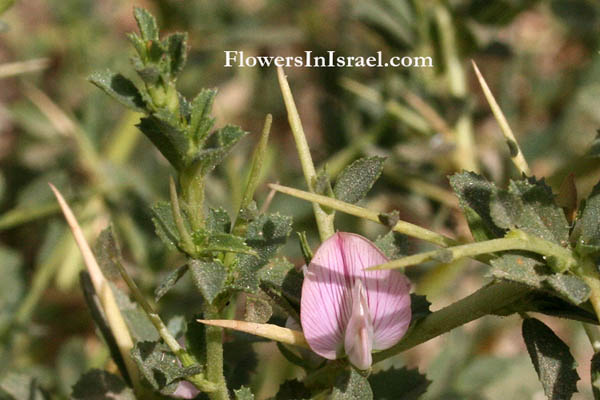Hebrew: שברק קוצני, Arabic: الشبرق الشائك
| Scientific name: | Ononis spinosa L. | |
| Synonym name: | Ononis antiquorum L., Onosis leiosperma Boiss. | |
| Common name: | Tall Spiny Rest-harrow | |
| Hebrew name: | שברק קוצני | |
| Arabic name: | الشبرق الشائك, alshabriq alshshayik | |
| Family: | Papilionaceae, פרפרניים |

|
| Life form: | Hemicryptophyte | |
| Spinescence: | Stems | |
| Leaves: | Alternate, compound, trifoliate | |
| Flowers: | Pink | |
| Flowering Period: | April, May, June, July, August, September, October | |
| Habitat: | Batha, Phrygana | |
| Distribution: | Mediterranean Woodlands and Shrublands, Semi-steppe shrublands, Shrub-steppes, Deserts and extreme deserts, Montane vegetation of Mt. Hermon | |
| Chorotype: | Med - Irano-Turanian | |
| Summer shedding: | Perennating |

Location: Bnei Zion Nature Reserve Derivation of the botanical name: Ononis, (Theophrastus) is from the Greek onos, meaning "ass" (because they are said especially to like it), and the classical Greek name used by Pliny for the rest-harrow. spinosus, spinos, "thorny", refers to its spiny nature. antiquorum, of the ancients. leiosperma, Greek leios, λειοϛ, smooth; sperma, σπερμα, seed, germ; smooth seeded. The hebrew word: shabrak, שברק, borrowed from Arabic Al-Shabraq, Al-Shibraq, ononis.

|